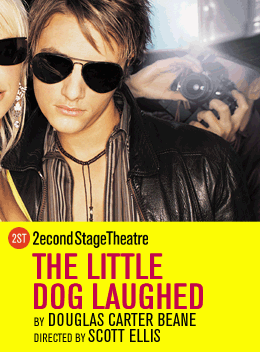Opening bow
Looking out from the new proscenium stage as workers attend to last-minute details before the Guthrie's opening.
By Michael Metzger
Guthrie Theater set to debut with celebration and plays
The new cultural constellation is complete. Minneapolis has been reconfigured, broadened and brightened with a generation's gifts to the future: the expanded Walker Art Center, Minneapolis Institute of Art, Children's Theatre, as well as a new Central Library, and now, the star beside the river, the new twilight-blue Guthrie Theater.
The $125 million, three-theater complex is already one of the most remarkable landmarks in the city; that's as clear as a view of the Guthrie itself from across the Mississippi River Downtown.
Up around the bend
The celebration of the opening of the new Guthrie, 818 S. 2nd St., is Sunday, June 25 beginning at noon and lasting until 2 in the morning. The gala features a dedication by Guthrie artistic director Joe Dowling at 1 p.m., and performances by musician Peter Himmelman, In the Heart of the Beast Puppet and Mask Theatre, and South Minneapolis punk/hip hop artist P.O.S., among others, scattered throughout the afternoon and evening. (See “Guthrie Festivities” sidebar for complete schedule.)
The artists and dignitaries will gather around and inside the striking addition to the city's arts scene designed by French architect Jean Nouvel. His big, blue bend of steel is nestled among the old concrete grain silos and new condos sitting in the shadow of the neon Gold Medal Flour sign in the Mills District on the west bank of the river.
Construction of the 285,000-square-foot theater center began in September 2003 and has been brought in on time and on budget, said Director of Communications Melodie Bahan.
The new Guthrie features a 1,100-seat thrust stage with seating on three sides - it's a slightly smaller recreation of the theater at the old Guthrie. Its seats echo the autumnal colors of the original theater's seats, while curved acoustic panels above allow the unamplified stage voices to carry to the back of the intimate, steep space.
Named after Margaret and Angus Wurtele, the thrust has wider seats than the original, more legroom and better sightlines and acoustics. There's also a 700-seat Proscenium Theater with seats covered in a vibrant, deep red, and a 200-capacity studio with flexible seating. The two main theaters are both on the fourth floor, while the studio is up on the ninth floor. The old Guthrie, which sat next to the Walker on Hennepin Ave., had a single 1,400-seat theater.
Bahan said when Nouvel saw the site for the new Guthrie along the Mississippi, he said, “I'm going to put the theaters and the lobbies 50 feet in the air.” She said there was immediate opposition to the idea. “It's like, ‘Oh, that makes no sense at all. How do you get materials and scenery up?' But he insisted and we trusted and he brilliantly designed our scene shop across Second Street on top of the parking ramp.
“The sets get built over there, rolled across, and they're right on the stage floors for the Thrust and Proscenium.”
The Guthrie folks' trust in Nouvel has paid off with an astonishing array of grand architectural gestures, including the cantilevered bridge reaching out the equivalent of 12 stories to the river.
The inside of the “Endless Bridge” serves as a lobby for the two main theaters, while the outside far end of it serves as a midair balcony with stunning views of the river and city. Bahan said, as far as they know, it's the largest occupied cantilever in the world, held up by two Eiffel Towers' worth of steel connecting it to the rest of the building as well as the planet (tons of steel were driven deep into the bedrock below).
As you walk along the inside of the bridge, your eyes are repeatedly lured from the quiet gray of the walls decorated with ghostly images of past Guthrie productions to the living paintings of Minneapolis along the walls. These paintings are thoughtfully positioned windows framing the silos, Stone Arch Bridge and other elements of the outside world.
Nouvel clambered up on a crane before he began his planning, Bahan said, to scope out the views and figure out just which outlooks he wanted to capture.
The Guthrie also has two restaurants, Cue, the main eatery, has a street entrance on the ground level and will be accessible to diners regardless of whether a play is in production or not. There's a lobby restaurant as well, offering preshow eats and light lunches.
Other amenities include bar service at 11 - yes, that's eleven - locations throughout the building, as well as a 1,000-car city-owned parking garage (done up in deep blue glass and bright aluminum), a street-level gift shop, four classrooms, costume and scenery shops, and an audio recording studio.
It's a startling upgrade from the old place; with nearly three times as much space, twice as many public bathrooms, a third more dressing rooms, and a building that will serve as a visual exclamation mark for generations.
Backward, forward
The original Guthrie opened in May of 1963 with a production of “Hamlet” - the same play it closed with earlier this year. The new Guthrie's season features 11 - yes, that's 11 - plays, including the world premiere of Simon Levy's adaptation of F. Scott Fitzgerald's “The Great Gatsby” on the Wurtele Thrust Stage. (Fitzgerald was, of course, a native of St. Paul.) The McGuire Proscenium Stage (named after UnitedHealth Group CEO William McGuire and his Powerball-sized paycheck) opens with Tom Stoppard's “The Real Thing,” and the Dowling Studio (named for the Guthrie's artistic director, Joe) debuts “The Falls,” by Jeffrey Hatcher.
Later in the season, the thrust features Shakespeare's “The Merchant of Venice,” and the musical ᅓ,” while the proscenium stage is home to productions of George Bernard Shaw's “Major Barbara” and Tennessee Williams' “The Glass Menagerie.”
The Studio is scheduled to feature “Boats on a River” by Julie Marie Myatt in its inaugural season.
By Michael Metzger
Guthrie Theater set to debut with celebration and plays
The new cultural constellation is complete. Minneapolis has been reconfigured, broadened and brightened with a generation's gifts to the future: the expanded Walker Art Center, Minneapolis Institute of Art, Children's Theatre, as well as a new Central Library, and now, the star beside the river, the new twilight-blue Guthrie Theater.
The $125 million, three-theater complex is already one of the most remarkable landmarks in the city; that's as clear as a view of the Guthrie itself from across the Mississippi River Downtown.
Up around the bend
The celebration of the opening of the new Guthrie, 818 S. 2nd St., is Sunday, June 25 beginning at noon and lasting until 2 in the morning. The gala features a dedication by Guthrie artistic director Joe Dowling at 1 p.m., and performances by musician Peter Himmelman, In the Heart of the Beast Puppet and Mask Theatre, and South Minneapolis punk/hip hop artist P.O.S., among others, scattered throughout the afternoon and evening. (See “Guthrie Festivities” sidebar for complete schedule.)
The artists and dignitaries will gather around and inside the striking addition to the city's arts scene designed by French architect Jean Nouvel. His big, blue bend of steel is nestled among the old concrete grain silos and new condos sitting in the shadow of the neon Gold Medal Flour sign in the Mills District on the west bank of the river.
Construction of the 285,000-square-foot theater center began in September 2003 and has been brought in on time and on budget, said Director of Communications Melodie Bahan.
The new Guthrie features a 1,100-seat thrust stage with seating on three sides - it's a slightly smaller recreation of the theater at the old Guthrie. Its seats echo the autumnal colors of the original theater's seats, while curved acoustic panels above allow the unamplified stage voices to carry to the back of the intimate, steep space.
Named after Margaret and Angus Wurtele, the thrust has wider seats than the original, more legroom and better sightlines and acoustics. There's also a 700-seat Proscenium Theater with seats covered in a vibrant, deep red, and a 200-capacity studio with flexible seating. The two main theaters are both on the fourth floor, while the studio is up on the ninth floor. The old Guthrie, which sat next to the Walker on Hennepin Ave., had a single 1,400-seat theater.
Bahan said when Nouvel saw the site for the new Guthrie along the Mississippi, he said, “I'm going to put the theaters and the lobbies 50 feet in the air.” She said there was immediate opposition to the idea. “It's like, ‘Oh, that makes no sense at all. How do you get materials and scenery up?' But he insisted and we trusted and he brilliantly designed our scene shop across Second Street on top of the parking ramp.
“The sets get built over there, rolled across, and they're right on the stage floors for the Thrust and Proscenium.”
The Guthrie folks' trust in Nouvel has paid off with an astonishing array of grand architectural gestures, including the cantilevered bridge reaching out the equivalent of 12 stories to the river.
The inside of the “Endless Bridge” serves as a lobby for the two main theaters, while the outside far end of it serves as a midair balcony with stunning views of the river and city. Bahan said, as far as they know, it's the largest occupied cantilever in the world, held up by two Eiffel Towers' worth of steel connecting it to the rest of the building as well as the planet (tons of steel were driven deep into the bedrock below).
As you walk along the inside of the bridge, your eyes are repeatedly lured from the quiet gray of the walls decorated with ghostly images of past Guthrie productions to the living paintings of Minneapolis along the walls. These paintings are thoughtfully positioned windows framing the silos, Stone Arch Bridge and other elements of the outside world.
Nouvel clambered up on a crane before he began his planning, Bahan said, to scope out the views and figure out just which outlooks he wanted to capture.
The Guthrie also has two restaurants, Cue, the main eatery, has a street entrance on the ground level and will be accessible to diners regardless of whether a play is in production or not. There's a lobby restaurant as well, offering preshow eats and light lunches.
Other amenities include bar service at 11 - yes, that's eleven - locations throughout the building, as well as a 1,000-car city-owned parking garage (done up in deep blue glass and bright aluminum), a street-level gift shop, four classrooms, costume and scenery shops, and an audio recording studio.
It's a startling upgrade from the old place; with nearly three times as much space, twice as many public bathrooms, a third more dressing rooms, and a building that will serve as a visual exclamation mark for generations.
Backward, forward
The original Guthrie opened in May of 1963 with a production of “Hamlet” - the same play it closed with earlier this year. The new Guthrie's season features 11 - yes, that's 11 - plays, including the world premiere of Simon Levy's adaptation of F. Scott Fitzgerald's “The Great Gatsby” on the Wurtele Thrust Stage. (Fitzgerald was, of course, a native of St. Paul.) The McGuire Proscenium Stage (named after UnitedHealth Group CEO William McGuire and his Powerball-sized paycheck) opens with Tom Stoppard's “The Real Thing,” and the Dowling Studio (named for the Guthrie's artistic director, Joe) debuts “The Falls,” by Jeffrey Hatcher.
Later in the season, the thrust features Shakespeare's “The Merchant of Venice,” and the musical ᅓ,” while the proscenium stage is home to productions of George Bernard Shaw's “Major Barbara” and Tennessee Williams' “The Glass Menagerie.”
The Studio is scheduled to feature “Boats on a River” by Julie Marie Myatt in its inaugural season.










0 Comments:
Post a Comment
<< Home